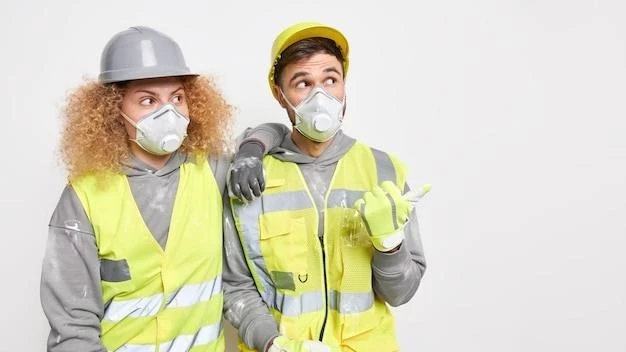The Occupational Safety and Health Administration (OSHA) plays a pivotal role in ensuring the safety and well-being of workers across the United States. Established by the Occupational Safety and Health Act of 1970٫ OSHA operates under the Department of Labor with a mission to “assure safe and healthful working conditions for working men and women by setting and enforcing standards and by providing training٫ outreach٫ education and assistance.” This article delves into the multifaceted functions of OSHA and its impact on fostering a safer work environment for all.
Setting and Enforcing Standards
At the heart of OSHA’s mission lies its authority to establish and enforce safety and health standards applicable to a wide range of industries. These standards are designed to address various workplace hazards, covering aspects such as:
- Hazard Communication: Employers are required to inform workers about hazardous chemicals present in the workplace, provide training on their safe handling, and maintain Safety Data Sheets (SDS) for each chemical.
- Personal Protective Equipment (PPE): OSHA standards mandate the use of appropriate PPE, such as gloves, safety glasses, and respirators, to protect workers from specific hazards present in their work environment.
- Fall Protection: For industries with potential fall hazards, OSHA has stringent standards for fall protection systems, including guardrails, safety nets, and personal fall arrest systems.
- Control of Hazardous Energy (Lockout/Tagout): To prevent the accidental release of hazardous energy during machinery maintenance or repair, OSHA requires employers to implement lockout/tagout procedures.
- Ergonomics: OSHA provides guidelines and standards to address ergonomic hazards, focusing on designing workstations and tasks to minimize the risk of musculoskeletal disorders.
Enforcement of these standards is carried out through workplace inspections conducted by OSHA compliance safety and health officers (CSHOs). These inspections can be triggered by various factors, including worker complaints, referrals from other agencies, or targeted inspections based on high-hazard industries.
Training, Outreach, Education, and Assistance
Beyond setting and enforcing standards, OSHA actively engages in a range of activities aimed at promoting workplace safety and health awareness. These include:
- Training Programs: OSHA offers a variety of training programs for employers and workers on various safety and health topics. These programs aim to equip participants with the knowledge and skills necessary to identify and mitigate workplace hazards effectively.
- Outreach Initiatives: OSHA conducts outreach activities, such as workshops, seminars, and public awareness campaigns, to disseminate information about workplace safety and health regulations and best practices.
- Educational Resources: OSHA develops and provides a wealth of educational materials, including fact sheets, quick cards, and eTools, covering a wide range of safety and health topics. These resources are readily accessible online and are designed to assist employers and workers in understanding and complying with OSHA standards.
- Consultation Services: OSHA offers free and confidential consultation services to small and medium-sized businesses to help them identify and address workplace hazards, improve their safety and health management systems, and achieve compliance with OSHA standards.
Impact of OSHA
Since its inception, OSHA has played a crucial role in significantly reducing workplace fatalities, injuries, and illnesses. According to OSHA data, workplace fatality rates have declined by more than 65 percent, and occupational injury and illness rates have declined by 67 percent since the agency was established in 1970. This progress is a testament to the effectiveness of OSHA’s multifaceted approach in promoting workplace safety and health;

Employer Responsibilities
OSHA regulations place specific responsibilities on employers to ensure a safe and healthy work environment. These responsibilities include:
- Providing a workplace free from recognized serious hazards.
- Complying with all applicable OSHA standards.
- Informing workers about hazards through training, labels, and alarms.
- Providing and maintaining required PPE.
- Keeping accurate records of work-related injuries and illnesses.
- Posting the OSHA “Job Safety and Health ― It’s the Law” poster in a prominent location.
- Not retaliating against workers for exercising their rights under the OSH Act.
Worker Rights
OSHA also empowers workers with specific rights to ensure their safety and health on the job. These rights include:
- Working in a safe and healthful workplace.
- Knowing about hazardous chemicals in their workplace.
- Receiving information and training on job hazards in a language they understand.
- Requesting an OSHA inspection of their workplace.
- Filing a complaint with OSHA without fear of retaliation.
- Participating in an OSHA inspection and speaking privately with an inspector.

Conclusion
The Occupational Safety and Health Administration plays a vital role in safeguarding the well-being of America’s workforce. Through its multifaceted approach of setting and enforcing standards, providing training and education, and empowering workers, OSHA has contributed significantly to reducing workplace fatalities, injuries, and illnesses. By fostering a culture of safety and health in workplaces across the nation, OSHA strives to ensure that every worker returns home safe and healthy at the end of each workday. As workplaces continue to evolve and new challenges emerge, OSHA remains committed to adapting its strategies and resources to address emerging risks and promote the safety and health of all workers.










